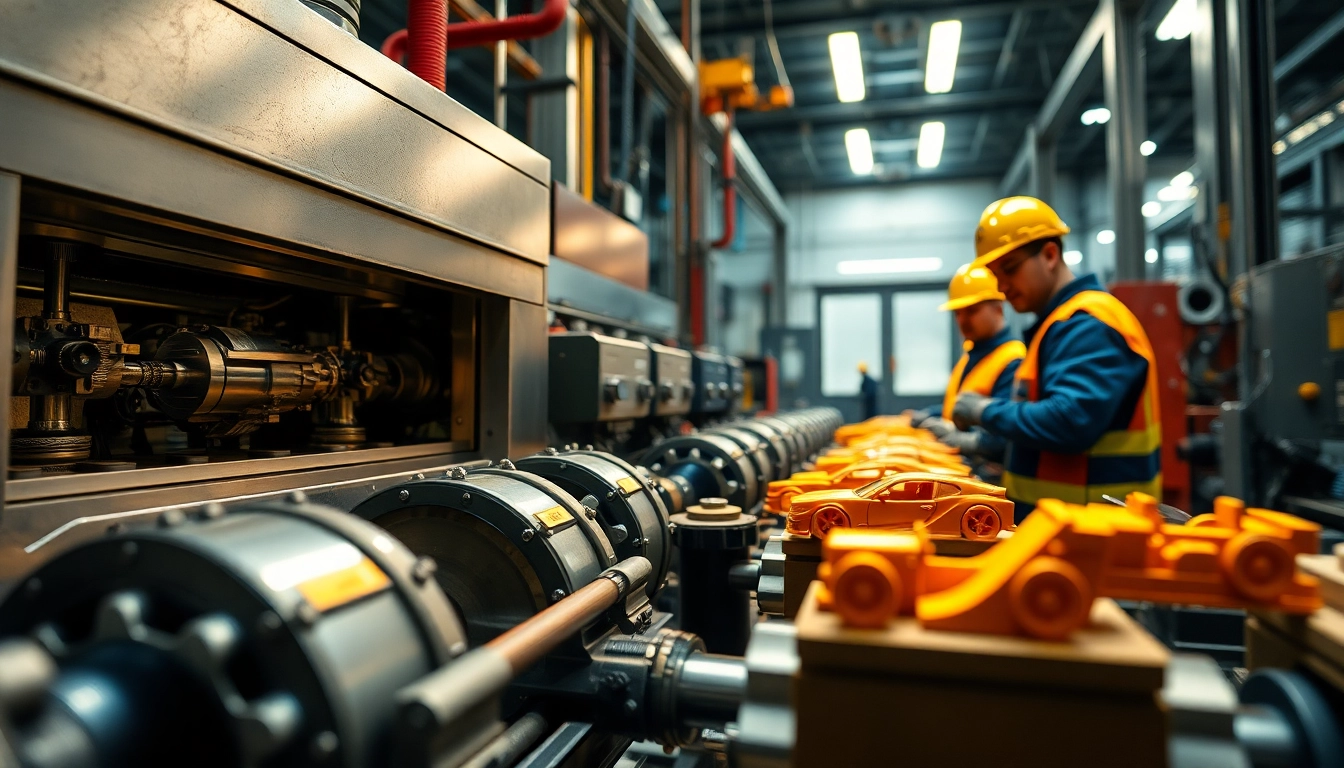Understanding Diecasting in Malaysia
Diecasting is a pivotal manufacturing process that involves forcing molten metal into a mold under high pressure. This technique is increasingly gaining traction in Malaysia, positioning the country as a burgeoning hub for diecasting. As industries evolve, the need for precise and durable metal components has placed diecasting at the forefront of manufacturing technologies. When exploring options, diecaster malaysia offers insights into how Malaysian manufacturers are spearheading innovations in this field.
The Basics of Diecasting Technology
At its core, diecasting involves two primary methods: hot chamber and cold chamber diecasting. The hot chamber method is ideal for metals with low melting points like zinc, while the cold chamber process is suited for materials such as aluminum and magnesium. Each method presents unique advantages and is selected based on the specific requirements of production. Understanding these fundamentals is crucial for manufacturers looking to optimize their diecasting processes.
Key Advantages of Diecasting for Manufacturers
- Cost Efficiency: Diecasting allows for mass production with minimal material wastage, significantly lowering costs.
- Precision: The process provides high dimensional accuracy, which is vital for applications requiring tight tolerances.
- Strength: Components produced via diecasting possess enhanced mechanical properties, making them suitable for demanding applications.
Industry Application Areas and Trends
Diecasting is widely used in various industries, including automotive, aerospace, electronics, and consumer goods. Recent trends indicate a growing use of lightweight materials in automotive diecasting to enhance fuel efficiency and reduce emissions. Additionally, the rise of electric vehicles (EVs) is expected to drive demand for specialized diecast components.
Exploring the Malaysian Diecasting Market
Market Overview and Growth Projections for 2025
The Malaysian diecasting market is poised for significant growth, with projections indicating an annual growth rate of over 5% through 2025. This growth is driven by the increasing demand for durable metal parts across various industries, particularly automotive and electronics. As Malaysia continues to invest in manufacturing infrastructure, its position in the global diecasting landscape is expected to strengthen.
Leading Diecasting Manufacturers in Malaysia
Several key players dominate the Malaysian diecasting sector, including companies that specialize in high-pressure diecasting processes. These manufacturers are known for their advanced technologies and commitment to high-quality production standards, ensuring that they meet both domestic and international demands efficiently. Their ability to adapt to changing market needs and invest in R&D sets them apart in this competitive landscape.
Emerging Competitors and Their Strategies
As the Malaysian diecasting market expands, new entrants are emerging, bringing fresh ideas and competitive pricing strategies. These companies often focus on niche markets, such as custom diecast components or eco-friendly diecasting practices. By leveraging innovative technologies and sustainable methods, they aim to carve out their market share in a crowded space.
Technological Advancements in Diecasting
Latest Innovations in Diecasting Equipment
Technological advancements are significantly enhancing diecasting capabilities. New diecasting machines featuring automated controls, improved cooling systems, and real-time monitoring are revolutionizing production. These innovations not only increase efficiency but also improve the quality of the finished products, enabling manufacturers to meet stringent industry standards.
Impact of Automation on Production Efficiency
Automation is a game changer in diecasting, streamlining workflows and reducing labor costs. Automated systems can optimize cycle times, improve precision, and minimize human error. This shift towards automation not only translates to cost savings but also aligns with industry trends that favor high productivity and lower operational costs.
Sustainability Trends in Diecasting Practices
The diecasting industry is increasingly focusing on sustainability, with practices aimed at reducing energy consumption and waste. Innovations such as recycled materials in diecasting processes and energy-efficient machinery are becoming standard. Manufacturers who embrace these sustainability trends not only reduce their environmental footprint but also appeal to a growing segment of eco-conscious consumers.
Challenges and Solutions in the Diecasting Sector
Common Obstacles Facing Diecasters in Malaysia
Despite its growth, the Malaysian diecasting industry faces several challenges, including rising production costs and competition from low-cost manufacturing countries. Additionally, sourcing high-quality raw materials can sometimes be problematic. Addressing these issues is crucial for sustaining growth and competitiveness.
Best Practices for Overcoming Production Issues
To mitigate production challenges, manufacturers are encouraged to adopt a holistic approach that includes workforce training, regular equipment maintenance, and investment in technology. Establishing strong relationships with suppliers and diversifying material sources can also help stabilize production processes and reduce costs.
Case Studies: Successful Adaptations by Local Companies
Several Malaysian diecasting companies have successfully navigated these challenges through innovative strategies. For instance, one manufacturer revamped their supply chain management to enhance raw material procurement, while another invested in advanced diecasting technology, resulting in increased output and improved product quality. These examples showcase the resilience and adaptability of local players in the diecasting market.
Future Outlook for Diecasting in Malaysia
Predicted Industry Trends and Consumer Preferences
Looking ahead, the diecasting industry in Malaysia is expected to embrace trends such as increased customization and the use of smart manufacturing technologies. As consumer preferences shift towards personalized products, manufacturers that can provide tailored solutions will have a competitive edge. Additionally, the integration of AI and IoT technology in production processes will likely become more prevalent.
Investment Opportunities in the Malaysian Market
Investors looking to enter the Malaysian diecasting market will find numerous opportunities, particularly in sectors like automotive and renewable energy. Strategic partnerships with technology providers and local manufacturers can facilitate entry and enhance market insights. Furthermore, government incentives aimed at fostering manufacturing growth present additional avenues for investment.
Preparing for Future Challenges and Innovations
In an ever-evolving landscape, diecasters must remain agile and forward-thinking. Investing in R&D, adopting innovative technologies, and focusing on sustainability will be essential for long-term success. As the market dynamics change, staying informed and adaptable will position Malaysian diecasters as leaders in the global manufacturing arena.
